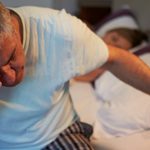
Your schoolmate who acted like he was better than everyone else has probably shed some of that narcissistic behavior an adult. New research shows people tend to be less narcissistic as they age. Still, those who were more narcissistic as kids tended to be narcissists as adults. “One theory suggests that the social roles we take on in adulthood, for example as a partner, a parent, an employee and so on, lead to the development of more mature personality characteristics, including lower levels of narcissism,” said researcher Ulrich Orth of the University of Bern in Switzerland. Narcissistic personality disorder is a mental health condition in which people have an unreasonably high sense of their own importance, according to the Mayo Clinic. They crave attention, admiration and seem to be extremely confident. Behind the mask, however, they’re unsure of their own worth and rattled by even the slightest criticism. To learn more about narcissism, Orth’s team analyzed data from 51 studies from the United States, Canada, Western Europe, China and New Zealand that examined how levels of narcissism changed over time. In all, the studies included more than 37,200 people from 8 to 77 years of age. Some were followed for decades. Researchers looked at three types of narcissism. Agentic narcissists have a sense of superiority and strong need for admiration. Antagonistic narcissists are arrogant, callous,… read on > read on >
























-300x200.jpg)













